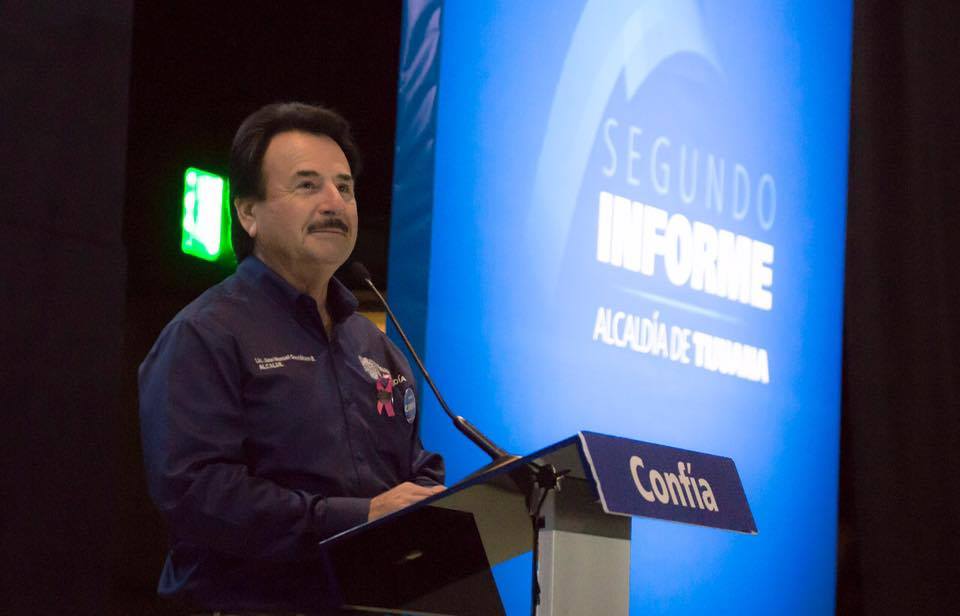
TIJUANA, Mexico — With about 3,000 Central American migrants having reached the Mexican border across from California and thousands more anticipated, the mayor of Tijuana said Friday that the city was preparing for an influx that will last at least six months and may have no end in sight.
Juan Manuel Gastelum said there were 2,750 migrants from the caravan in Tijuana and that estimates by Mexico’s federal government indicate the number could approach 10,000.
“No city in the world is prepared to receive this — if I’m allowed — this avalanche,” he said during a news conference at City Hall. “It is a tsunami. There is concern among all citizens of Tijuana.”
U.S. border inspectors are processing only about 100 asylum claims a day at Tijuana’s main crossing to San Diego, creating long waits. Asylum seekers register their names in a tattered notebook managed by migrants themselves that had more than 3,000 names even before the caravan arrived.
Along the nearly 3,000 miles (nearly 5,000 kilometres) from the caravan’s origin in San Pedro Sula, Honduras, to this city on the Pacific Ocean, the migrants have stopped in most places for only a single night, with some exceptions.
That overwhelmed small towns in southern Mexico in particular — but only briefly. The migrants’ expected long stay in Tijuana has raised concerns about the ability of the teeming border city of more than 1.6 million to handle the influx.
Pleading for financial support from the Mexican government, Gastelum sternly warned migrants against criminal behaviour, though authorities reported only seven arrests so far — five for drug consumption and two for disorderly conduct.
“Supposedly they are fleeing catastrophe, mistreatment in their countries of origin. How is it possible that they arrive here and, if they want, create disorder?” the mayor said. “It’s not right.”
His language linking the latest arrivals to crime underscores how the caravan is already testing Tijuana’s proud history as a melting pot for immigrants, a tradition that Gastelum also highlighted.
A municipal gymnasium and recreational complex that has been converted to a shelter was expected to register up to 1,000 people Thursday night but ended up housing more than 2,000, including more than 400 children. Authorities promised more toilets.
Tijuana officials said they opened the shelter as part of an effort to keep migrants out of public spaces.
The city’s privately run shelters are meant to have a capacity of 700.
Gastelum wondered why the migrants chose Tijuana instead of other Mexican cities on the U.S. border, vaguely suggesting a sinister plot without elaborating.
“There is an intention to do things badly. There is an intention to prejudice Tijuana, and we cannot allow that,” he said.
His comments marked a contrast to a more welcoming tone from other officials. Francisco Rueda, the top deputy to Baja California Gov. Francisco Vega de la Madrid, said Thursday that the state had 7,000 jobs available for any migrants who obtain legal status in Mexico.
Also Friday, another caravan set out from Mexico City heading toward the border.
In Tijuana, concerns are rising about what the Central Americans will do while they wait months to apply for asylum in the United States, or how they will support themselves in the meantime.
At the sports complex turned shelter, migrants napped on mattresses, played soccer and exchanged banter on a crowded, adjoining courtyard. A woman dabbed her crying, naked toddler with a moist cloth.